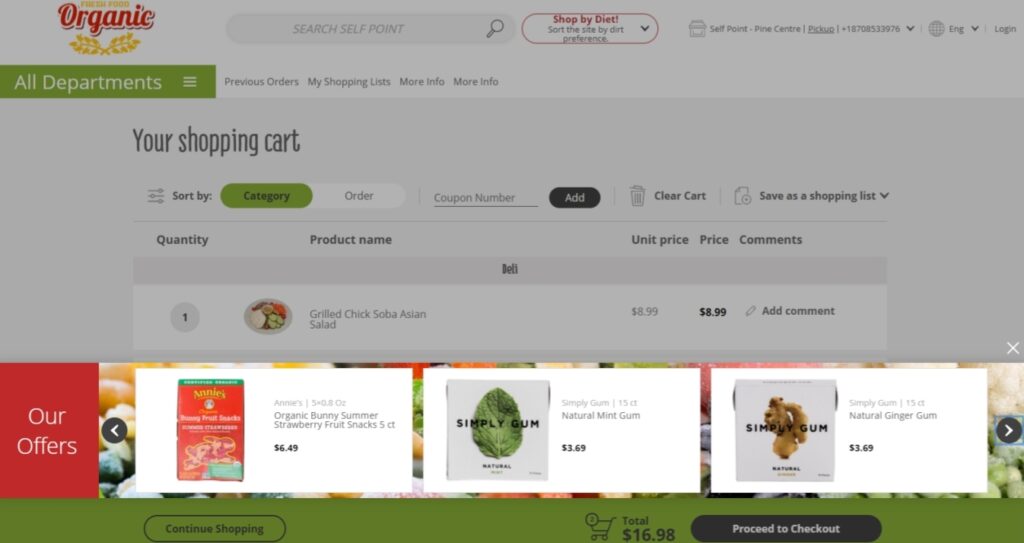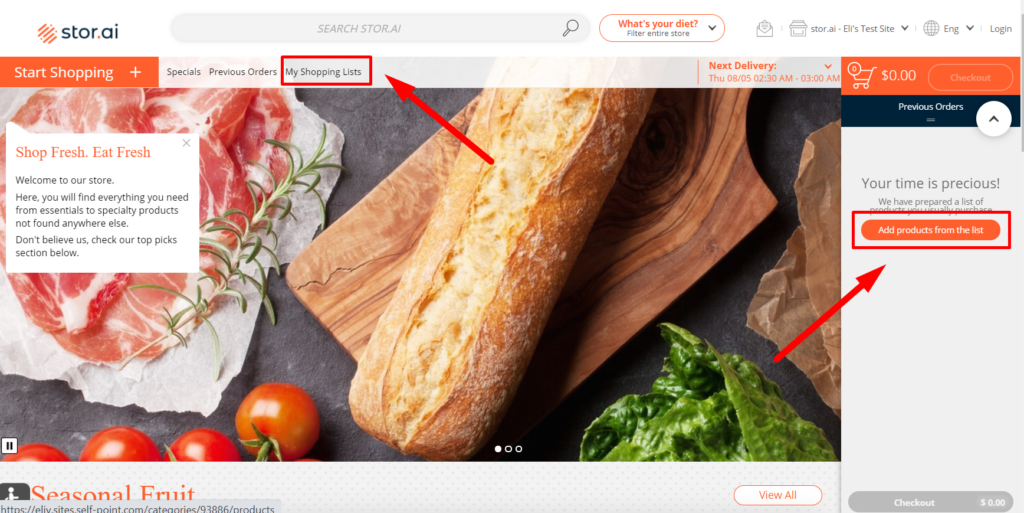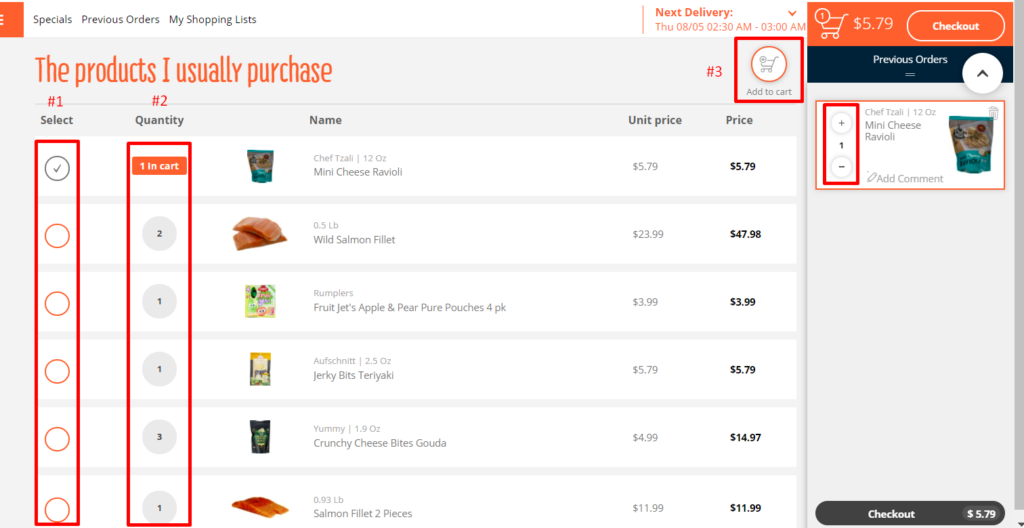Inflation: 4 Strategies for E-Commerce Grocery Stores to Retain Customers
A pandemic leading to lockdowns. Worker shortages causing food supply chain disruptions. And now the world is on the brink of war.
The consistent rise in gas prices, food costs, and living costs was bound to happen. Numbers show grocery expenses increased by 7.9% in 2021. And it’s expected to continue rising by 3-4% in 2022.
We’re seeing record-high inflation and your customers’ pockets are feeling the pain. Soon your grocery store could too (if not already).
What’s your strategy to keep buyers coming back amid inflation?
If you’re not already implementing methods to attract and retain grocery shoppers, then this guide will help. Let’s review 4 strategies that can help grocers prevent customer retention issues in 2022.
How is inflation impacting grocery shoppers (and stores)?

The pay gap in hourly wages can no longer be ignored. It’s making it more difficult for consumers to afford basic living costs. And this is particularly true in the food and beverage industry, where wages are lagging.
The U.S. Bureau of Labor Statistics survey shows that in 2021, commodity prices rose by 6.2%, but wages only increased by 4.5%. According to Nela Richardson, the chief economist ADP (payroll processing company):
“The main takeaway for [the hospitality and retail] industries is that real wages are not keeping up with inflation and these jobs are barely treading water. As you make more money, price increases take up less of a bite of your budget. But if you’re making a smaller salary, inflation is a meaningful dent in your overall income.”
Wages and inflation are the double-edged swords cutting a giant hole in consumers’ pockets. But it’s not stopping them from buying food (after all, people must eat to survive).
Instead, shoppers are shifting how they buy groceries. And it’s the reason we see more grocery customers purchasing food items online.
E-commerce grocery is growing rapidly, presenting an opportunity for grocers to capture the attention and business of the “tomorrow consumer.” Online shopping is the new norm, so adapting now is critical to the future of grocery.
The data proves this showing record sales in the grocery industry during the COVID crisis. Typically, this industry grows by 1-2% per year. But in 2020, there was an astonishing 12% increase in sales.
This trend isn’t a fad—it’s still here and will probably stay for the foreseeable future. Especially as the strain of rising staple food prices plague consumers. Online grocery shopping allows shoppers to compare prices and have products either delivered or available for curbside pickup.
Although this sounds great, there’s a caveat—consumers aren’t loyal to brands anymore. They’re leaning towards the best prices for food. One survey with over 14,000 consumers found 20% will switch to cheaper brands if average prices continue to rise. And another 10% will switch to cheaper retailers and/or buy less frequently.
These are bold statements that can hurt your bottom line. What can you do about it as a grocer? Here are several ideas.
4 ways e-commerce grocers can appeal to shoppers in 2022
There’s no way around the price increases for gas, shipping, and manufacturing. But there are methods grocers can use to boost loyalty among customers.
1. Go online with an e-commerce grocery platform to attract shoppers
Grocery shoppers are on their mobile devices, even while in-store. So having an e-commerce website is critical to improving your sales and flexibility for today’s buyers. It also builds an omnichannel experience.
For example, a customer sees an item out of stock in one of your aisles. So they pull out their smartphone to purchase it through your e-commerce grocery app.

Stor.ai’s platform empowers consumers to access the products they need whenever they need it. It also allows your pickers to find and fulfill orders for customers that prefer their food items delivered.
Offering these solutions enhances the shopping experience, which increases customer loyalty.
2. Reduce inventory and variety to cut grocery costs (and confusion)
Passing inflation onto customers—not an ideal scenario. One alternative is to reduce the assortment of certain food categories. Offering dozens of varieties of a single product is outdated and wasteful in an era of inflation.
Now, this doesn’t mean offering only one option for each product category. Look into your data to see which products customers purchase the least. Then eliminate them from your inventory.
The goal is to delist items that won’t upset customers or lead to lost profits. Identify top performers and keep those in stock.
Plus, ordering more of the same stock gives grocers negotiation power, since they’re ordering more of a particular brand.
The other upside is customers won’t have to decide which variety of a product to buy. They can quickly pick up what they need and head to the register, reducing bottlenecks in the shopping experience.
This is the time to innovate your product selection—consider buying from local manufacturers and smaller brands.
3. Buy from local farms and invest in private brands to reduce expenses
The further your products ship from, the higher the export prices. And the more CPG brands you offer, the more money coming out of your pocket (and your customers).
By investing in local farms, you reduce the shipping costs and provide fresher produce to your shoppers.
Consider also offering a wider selection of private brand products to mark down food prices and ease the grocery bills of customers.
4. Personalize the customer shopping experience to improve value
Online grocery shopping opened the door to more variety. Not just in brands and flavors, but food prices as well. So having a way to improve the shopping experience is critical to set your store apart from competitors.
With stor.ai, grocers are personalizing shopping experiences using the platform’s shopping list generator. It helps buyers create a shopping list using the customer’s purchase history.

The customer clicks “My Shopping List” and then selects “Add products from the list.”

From here, customers can quickly create a shopping list by selecting the items to add to their cart, choose the quantity of each item, and checkout—all in one seamless flow.
Beat food inflation with smarter strategies
It’s time for grocers to meet consumers where their wallets are. In 2022, this means making shopping easier and cheaper. Grocery delivery, curbside pickup, and online shopping are several strategies stores are adopting to maintain relevance and consumer demand.
If you’re not already an e-commerce grocery store, then now’s the time to start. Stor.ai is an e-commerce grocery app designed for today’s shoppers. It’s equipped with picking and fulfillment features to streamline getting groceries into shoppers’ homes. And makes shopping online accessible and seamless for everyone.
We even make building customer loyalty easier using personalized emails and push notifications. Ready to see how it can improve your grocery sales and retention? Book a demo with us today.
